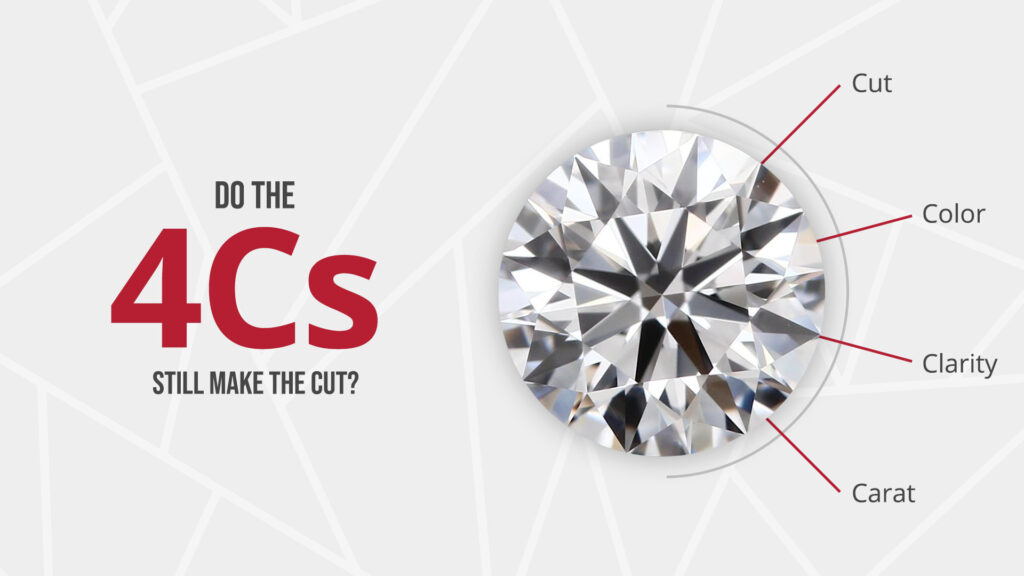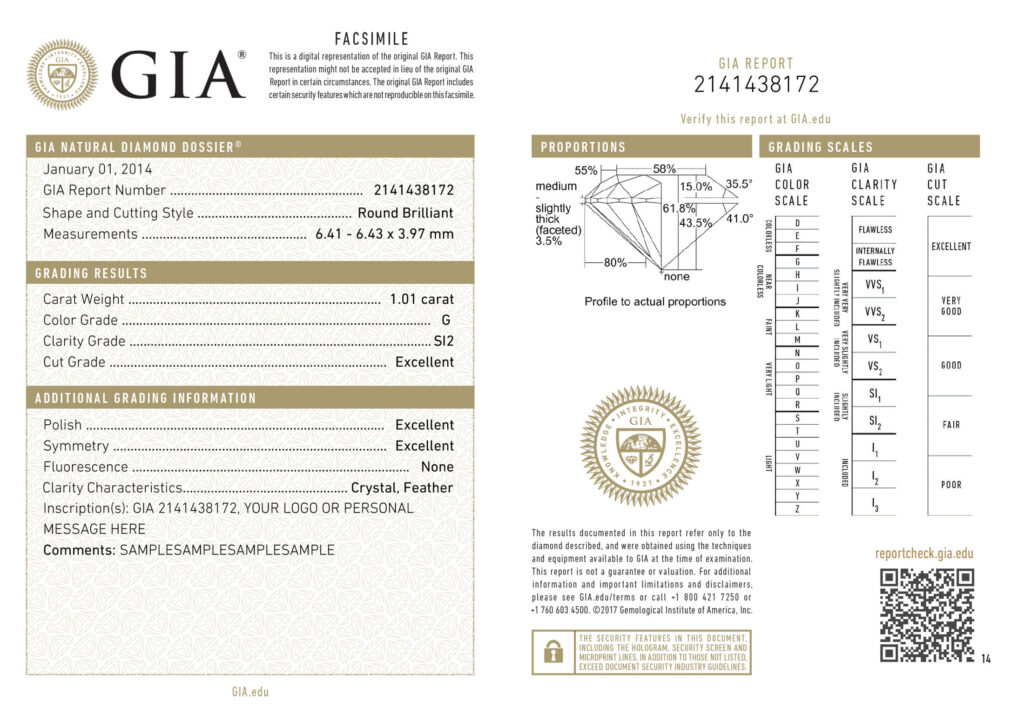Ever wondered why some diamonds carry higher price tags than others? The secret lies in a mix of factors like rarity, quality, and market demand. Diamonds are graded based on the famous “4 Cs”—carat, cut, color, and clarity. A diamond’s worth skyrockets if it excels in all four categories.
But it’s not just the technical specs that count. Market trends and consumer preferences also play a huge role in determining a diamond’s value. Understanding these nuances helps you make informed choices, whether you’re buying an engagement ring or investing in a precious gem. Stick around to learn more about what sets high-value diamonds apart.
The 4Cs of Diamond Quality
Diamonds are evaluated based on certain criteria known as the 4Cs of diamond quality. Understanding the 4Cs can help you appreciate why some diamonds are more valuable than others. Let’s delve into each of these factors:
Carat Weight
Carat weight is one of the most well-known aspects of a diamond. It refers to the diamond’s size and weight, with one carat equaling 200 milligrams. Larger diamonds are rarer and generally more valuable. However, two diamonds of equal carat weight can differ significantly in value based on the other 3Cs.
Cut
The cut of a diamond determines its brilliance and fire. It’s not about the diamond’s shape but how well it interacts with light. A well-cut diamond reflects light internally and back to the viewer’s eye, creating sparkle and enhancing its beauty. Cut is crucial as it affects the diamond’s overall appearance and value.
Clarity
Clarity assesses the presence of internal flaws and external blemishes in a diamond. The fewer imperfections a diamond has, the higher its clarity grade and value. These imperfections, known as inclusions, can affect the diamond’s brilliance by interfering with the passage of light.
Color
Diamond color refers to the absence of color in a diamond, with the highest quality diamonds being colorless. The Gemological Institute of America (GIA) grades diamond color on a scale from D (colorless) to Z (light yellow or brown). Colorless diamonds are the most valuable, as the presence of color can diminish a diamond’s sparkle and value.
Understanding how the 4Cs – carat weight, cut, clarity, and color – influence a diamond’s quality can help you make an informed decision when purchasing a diamond. Each C plays a vital role in determining a diamond’s beauty and value, making it essential to consider all factors when selecting the perfect diamond for your needs.

Diamond Certification
Diamond certification plays a crucial role in determining the quality and authenticity of a diamond. It serves as an official document that verifies the characteristics and value of a diamond based on expert analysis. Understanding the significance of certification can help consumers make informed decisions when purchasing diamonds.
Importance of Certification
Diamond certification provides an assurance of the diamond’s quality, including its cut, color, clarity, and carat weight. This documentation is issued by independent gemological laboratories that evaluate the diamond based on international standards. Having a certified diamond ensures transparency in the purchase process, as buyers can trust the information provided on the certificate.
Certified diamonds hold higher value and credibility in the market compared to non-certified ones. The detailed information on the certificate allows buyers to compare different diamonds accurately and ensures they are paying a fair price for the quality they are receiving. Additionally, when it comes to reselling or upgrading the diamond in the future, having a certificate enhances the diamond’s marketability and value.
Popular Certification Labs
Several renowned gemological laboratories are trusted worldwide for their accurate and reliable diamond certifications. The Gemological Institute of America (GIA) is one of the most respected and widely recognized certification labs known for its strict grading standards and consistency. Diamonds graded by GIA are highly valued in the industry due to the lab’s reputation for unbiased assessments.
The American Gem Society (AGS) is another prominent certification lab that focuses on a more comprehensive grading system, including light performance analysis. AGS-certified diamonds provide detailed information on the diamond’s cut quality, making them appealing to buyers seeking well-cut diamonds with exceptional brilliance. Other notable certification labs include the International Gemological Institute (IGI) and the European Gemological Laboratory (EGL), each with its own grading criteria and recognition in the diamond market.

Rarity and Uniqueness
When it comes to understanding why some diamonds hold a higher value than others, exploring their rarity and uniqueness is key. Let’s delve into the factors that contribute to the exceptional value of certain diamonds.
Natural vs. Lab-Created Diamonds
Natural diamonds, formed deep within the Earth over millions of years, are highly valued for their rarity. On the other hand, lab-created diamonds, while sharing the same chemical composition as natural diamonds, are produced in a controlled environment. The scarcity of natural diamonds makes them unique and sought after by many.
Rare Colored Diamonds
Among diamonds, colored variants are particularly rare and prized for their distinct hues. Colored diamonds come in shades like pink, blue, and green, with each color rarity varying significantly. These exquisite diamonds fetch high prices due to their scarcity and captivating beauty.
Origin and History
The history and origin of a diamond can greatly influence its value and desirability. Diamonds with a rich historical background, such as those with royal provenance or famous previous owners, often command premium prices at auctions. Understanding a diamond’s journey and heritage adds to its allure and uniqueness.
In the realm of diamonds, rarity plays a pivotal role in determining their worth. Whether it’s the natural formation process, the vibrant colors, or the intriguing histories behind them, rare diamonds stand out as true treasures in the world of gemstones. The allure of owning a piece of such unique beauty adds to the mystique and charm that diamonds hold for many.
Market Trends and Demand
In the intricate world of diamonds, market trends and demand play a pivotal role in determining the value of these precious gemstones. Understanding the economic factors and consumer preferences that drive these trends is essential for both buyers and sellers in the diamond market.
Economic Factors
Economic factors such as global financial stability, inflation rates, and currency fluctuations significantly impact the diamond industry. During times of economic uncertainty, investors often perceive diamonds as a safe haven, leading to increased demand and higher prices. Conversely, economic downturns may result in reduced consumer purchasing power, affecting the demand for luxury items like diamonds.
Moreover, the supply chain of diamonds, from mining to retail, is influenced by economic conditions. Fluctuations in labor costs, mining regulations, and transportation expenses can all impact the overall pricing of diamonds. As a result, staying abreast of economic indicators and market forecasts is crucial for stakeholders in the diamond industry to anticipate shifts in demand and pricing.
Consumer Preferences
Consumer preferences play a key role in driving the demand for specific types of diamonds. Factors such as diamond cut, color, clarity, and carat weight influence consumer purchasing decisions. For instance, some buyers may prioritize the brilliance of a diamond and opt for a higher-quality cut, while others may value the carat size for its perceived status and significance.
Additionally, changing trends in fashion and lifestyle preferences can impact the demand for certain diamond shapes or styles. Designers and retailers often adapt their offerings to align with consumer preferences, creating diverse collections that cater to varying tastes and aesthetics in the market.
By closely monitoring shifts in consumer preferences and adapting to changing trends, diamond industry professionals can align their inventory and marketing strategies to meet the evolving demands of their target audience. This agility in response to consumer preferences is essential for staying competitive in the dynamic and ever-changing diamond market landscape.
Ethical and Environmental Considerations
When it comes to the value of diamonds, ethical and environmental considerations play a crucial role in today’s conscious consumer market. Understanding the origin and impact of a diamond is becoming increasingly important for buyers seeking transparency and sustainability in their purchases.
Conflict-Free Diamonds
Conflict-free diamonds are sourced in regions free from violence, human rights abuses, and unethical practices. Organizations like the Kimberley Process Certification Scheme ensure that diamonds are ethically mined and traded, aiming to prevent the flow of conflict diamonds into the mainstream market. By choosing conflict-free diamonds, consumers can support peace-building efforts and contribute to ethical practices within the diamond industry.
Sustainable Mining Practices
Sustainable mining practices focus on minimizing the environmental impact of diamond extraction. Companies are implementing measures such as water recycling, energy efficiency, and land restoration to reduce their ecological footprint. By prioritizing sustainability, mining operations can protect local ecosystems, wildlife habitats, and water sources, ensuring a more responsible approach to diamond production.
Understanding why some diamonds are more valuable than others boils down to specific attributes—cut, clarity, color, and carat weight.
These factors are graded meticulously, and even slight differences can massively impact a diamond’s value. Rarity of certain combinations makes a diamond stand out.
The market demand and emotional significance tied to diamonds further elevate their worth. The more rare and perfect a diamond is, the higher its value. Knowing what makes a diamond valuable helps you make smarter choices when investing.
